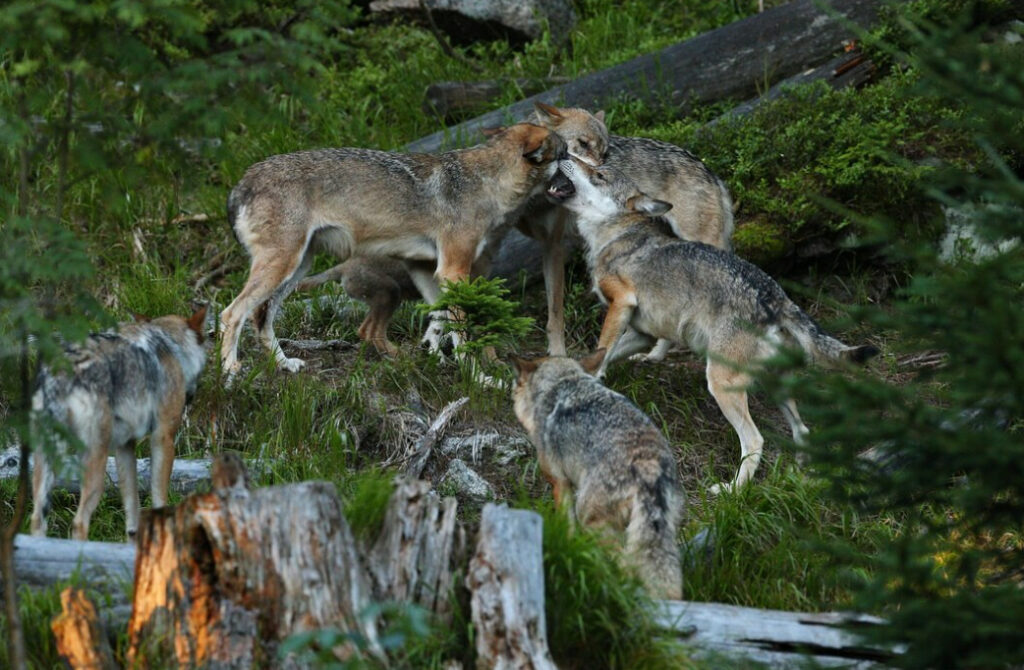In a move that has sparked significant controversy among wildlife advocates and hunting enthusiasts alike, recent legislative changes have fundamentally altered the landscape of wildlife protection on federal lands. With the stroke of a pen, the delicate balance between conservation efforts and hunting rights has been shifted. This article delves into the implications of the newly signed bill that undoes former federal protections, opening up national lands to practices previously deemed unethical by many conservationists.
New Law Expands Hunting Practices in Alaska’s Federal Lands

In a significant shift in wildlife management policy, the federal government has recently scaled back protections for animals residing in national preserves. This move was solidified when President Trump endorsed new legislation, effectively broadening the scope of hunting practices on these federal lands.
- The legislation in question, known as H.J. Res. 69, effectively nullifies the U.S. Fish and Wildlife Service’s former prohibitions;
- These regulations previously forbade practices such as the aerial shooting of wildlife, the hunting of hibernating bears, and the killing of predators like wolves and coyotes—as well as their offspring—within their dens;
- With the passage of this resolution, such activities may now take place across the expansive national preserves of Alaska, which cover over 76 million acres.
While these practices are generally not sanctioned in the state for recreational hunters, and local laws continue to prohibit sportsmen from engaging in these methods, the controversy arises from the exemptions made for subsistence hunters. These individuals depend on wild game as a crucial food source and are often excepted from general hunting restrictions.
Proponents of this legislative change argue that it is a matter of state sovereignty, advocating for Alaska’s autonomy in managing wildlife on national lands within its own territory. However, opponents criticize the reversal, labeling these hunting methods as cruel and unethical. The debate continues as this new law stands to reshape the dynamic between wildlife conservation and hunting rights in Alaska’s wilderness areas.
Controversial Reversal of Wildlife Protections Ignites Debate
The previous safeguards for wildlife on federally managed lands, which were set in place by the U.S. Fish and Wildlife Service in August 2016, came after prolonged disputes over the ethical and legal implications of certain hunting practices. These practices, including hunting predators from aircraft, baiting bears, and targeting hibernating creatures, were deemed controversial due to their invasive nature and potential threat to ecosystems.
When the House voted to rescind these rules, the response from wildlife advocates, notably the Humane Society, was one of vehement opposition. The organization highlighted the brutality of the hunting methods that were being permitted, such as the aerial tracking and killing of grizzly bears, the use of leg-crushing traps for bears, and the targeting of wolf families within their dens.
- The statement from Wayne Pacelle, the CEO of the Humane Society, underlined the distress within the animal welfare community;
- The overturning of these restrictions was portrayed as an affront to animal lovers across the nation, raising alarms over the potential inhumane treatment of wildlife families and the use of aggressive hunting tactics that could be reintroduced if the Senate and the President agreed with the House’s decision.
This move has sparked a broader debate about the balance between hunting rights and animal welfare on America’s public lands.
Balancing Alaska’s Predator-Prey Dynamics & Hunting

Alaska’s Board of Game has defended certain hunting practices, such as aerial shooting and other aggressive tactics, as legitimate management tools. Their stance is that these measures are sometimes necessary to maintain the balance between predators and the prey species they consume, which are also vital food resources for some local communities. This perspective considers the active reduction of predators like wolves and bears as a way to protect populations of deer, moose, and other hunted animals that are integral to the subsistence lifestyle of many Alaskans.
- On the other side of the argument, the Fish and Wildlife Service has expressed that the restrictions introduced in 2016 were designed to ensure the long-term viability of these very predator species on federal lands in Alaska;
- This viewpoint prioritizes ecological sustainability and the natural balance of species without human interference.
NBC News points to the fluctuating numbers of wolves in Denali National Park as a case study in this ongoing debate. Before the implementation of the Obama-era protections, the wolf population in Denali suffered a decline, which has left scientists and conservationists concerned about the impacts of unrestricted hunting practices. Although it’s not definitively clear whether the increase in the wolf population to 127 in 2016, up from a low of 112, was a direct result of federal protections, such statistics underscore the complexity of managing wildlife populations. These dynamics raise critical questions about the most ethical and effective methods for managing Alaska’s diverse ecosystem, which continues to be a contentious issue among conservationists, hunters, and policymakers.
Conclusion
The enactment of H.J. Res. 69 has altered the course of wildlife management on federal grounds, particularly in Alaska. It’s a move that questions ethical hunting limits and state versus federal oversight, with potential long-term ecological consequences yet to be seen. The debate underscores the complex relationship between human interests and conservation.

